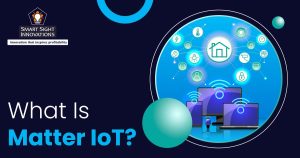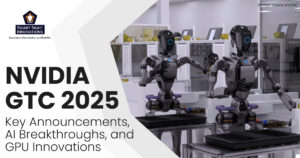 The dream of a seamless smart home often collides with the harsh reality of fragmentation. Different brands utilize various protocols, creating isolated islands within your connected home. Imagine lights controlled by one app, locks by another, and thermostats requiring a third. This disjointed experience is the “Smart Home Struggle.”
The dream of a seamless smart home often collides with the harsh reality of fragmentation. Different brands utilize various protocols, creating isolated islands within your connected home. Imagine lights controlled by one app, locks by another, and thermostats requiring a third. This disjointed experience is the “Smart Home Struggle.”
A survey has revealed a growing user frustration with incompatible smart home devices with 72% of respondents experiencing difficulty connecting devices from different brands, leading to confusion and wasted time. Furthermore, 58% expressed a desire for a unified platform to manage their entire smart home, highlighting the need for a solution like Matter.
In this article, we examine the Matter IoT architecture, its key benefits, and the profound impact it could have on the future of smart living.
What Is Matter IoT?
Fragmentation and compatibility issues have hindered the true potential of IoT. Enter Matter, an innovative protocol promising to unify the smart home ecosystem. Backed by tech giants like Amazon, Apple, and Google, Matter aims to establish a universal language for smart devices, enabling seamless connectivity and interoperability across brands and platforms.
This groundbreaking standard could finally deliver on the long-awaited promise of a truly connected home. Matter acts as a common language, allowing devices from different manufacturers to work together flawlessly.
This translates to a more streamlined setup process, a single app for managing your entire smart home, and a future brimming with possibilities for interconnected living. Matter promises to be the unifying force that finally fulfills the true potential of smart homes. It operates on a foundation of two key elements:
-
IP-Based Communication
Matter leverages Internet Protocol (IP), the same language used by computers and smartphones to connect on networks. This allows Matter devices to seamlessly communicate with each other and existing home networks, fostering a more unified environment.
-
Connectivity Protocols
While IP provides the backbone, Matter utilizes specific wireless protocols for data transmission. Thread, a low-power mesh networking technology, plays a crucial role.
Thread devices can directly communicate with each other, creating a robust and energy-efficient network ideal for battery-powered sensors and other smart home devices. Additionally, Wi-Fi can be used for devices with higher bandwidth needs. Matter ensures smooth interoperability between these protocols.
Matter vs Existing Solutions
Before Matter, protocols like Z-Wave and Wi-Fi dominated the smart home scene.
-
Z-Wave
It is a reliable and secure protocol, but limited in range and not widely adopted by all manufacturers.
-
Wi-Fi
Wi-Fi is widely available, but can create network congestion with many devices.
Matter addresses these limitations. It builds upon the strengths of existing protocols (for example, security from Z-Wave) while utilizing IP for a unified communication layer. Matter fosters a future where devices seamlessly work together regardless of the underlying physical protocol.
Advantages of Matter
Matter IoT offers unparalleled interoperability, reliability, security, and performance. With its focus on simplifying setup, safeguarding user data, and future-proofing investments, Matter IoT is poised to reshape the smart home landscape, ushering in a new era of connectivity, convenience, and innovation.
1. Interoperability
One of the most compelling aspects of Matter IoT is its emphasis on interoperability. Unlike traditional IoT ecosystems, which often rely on proprietary communication protocols, Matter IoT promotes seamless connectivity across a wide range of devices and platforms. Whether it’s smart thermostats, lighting systems, or security cameras, Matter-certified devices can communicate with each other effortlessly, breaking down the barriers that have long plagued the IoT industry.
2. Unified Ecosystem
Matter IoT fosters a unified ecosystem where devices from different manufacturers can coexist and collaborate harmoniously. This interoperability extends not only to devices within the home but also to various smart home platforms and ecosystems. Whether you prefer Apple HomeKit, Google Assistant, or Amazon Alexa, Matter IoT ensures that your devices can communicate seamlessly, regardless of the brand or platform.
3. Simplified Setup and Configuration
Gone are the days of complicated setup processes and compatibility issues. Matter IoT promises plug-and-play connectivity, allowing users to effortlessly add new devices to their smart home networks with minimal configuration required. This streamlined setup process not only saves time and effort but also ensures a hassle-free experience for users, regardless of their technical expertise.
4. Enhanced Reliability
Reliability is paramount in the world of IoT, where even minor communication glitches can disrupt essential functions. Matter IoT addresses this concern by implementing robust and stable communication protocols that ensure reliable connectivity at all times. Whether you’re controlling your smart lights from your smartphone or monitoring your home security system remotely, you can trust that Matter-certified devices will deliver consistent performance.
5. Improved Security and Privacy Measures
Security and privacy are top priorities in any IoT deployment, and Matter IoT is no exception. With built-in security features and stringent certification requirements, Matter-certified devices adhere to industry best practices for data protection and privacy. From secure authentication mechanisms to encrypted communication channels, Matter IoT prioritizes the security of user data, providing peace of mind in an increasingly connected world.
6. Future-Proofing Investments
Investing in smart home technology can be daunting, especially given the rapid pace of innovation in the IoT industry. However, Matter IoT offers a solution to this dilemma by future-proofing investments. With its focus on longevity and scalability, Matter-certified devices are designed to evolve with changing technology trends, ensuring that your smart home ecosystem remains relevant and functional for years to come.
7. Optimized Performance
Matter IoT doesn’t just prioritize interoperability and compatibility; it also delivers optimized performance across the board. Whether it’s faster response times, reduced latency, or improved energy efficiency, Matter-certified devices are engineered to deliver a superior user experience. From seamless voice commands to lightning-fast automation routines, Matter IoT raises the bar for performance in the smart home industry.
8. User-Friendly Experience
Last but not least, Matter IoT prioritizes the user experience, with intuitive interfaces and controls that make smart home management a breeze. Whether you’re using a smartphone app, a voice assistant, or a dedicated control panel, Matter-certified devices offer a consistent and intuitive user experience that minimizes complexity and maximizes convenience.
Controlling Matter Devices With Your Favorite Voice Assistant
One of the hallmarks of a convenient smart home is voice control. Matter doesn’t limit you to a single voice assistant ecosystem. Imagine yelling commands to your Google Assistant to dim Matter-enabled lights, or using Siri to adjust your Matter thermostat.
Matter integrates seamlessly with popular voice assistants like Google Assistant, Alexa, and Siri. This allows you to control your entire smart home, regardless of device brand, using your preferred voice assistant. This fosters a more personalized and intuitive user experience, letting you interact with your smart home using the voice commands you’re already familiar with.
Building Matter-Enabled Devices for Developers
To build Matter-enabled devices, developers need to familiarize themselves with the Matter specification and reference implementations provided by the Matter Working Group. The Matter Working Group operates under the umbrella of the Connectivity Standards Alliance (CSA), formerly known as the Zigbee Alliance. As part of the CSA, the Matter Working Group collaborates with other industry and standards organizations to ensure alignment with existing and emerging technologies. These resources offer comprehensive guidance on protocol implementation, device certification, and interoperability testing.
-
Choosing Hardware Platforms
Selecting the right hardware platform is crucial for Matter development. Developers can choose from a variety of microcontroller units (MCUs) and system-on-chip (SoC) solutions that support the necessary networking protocols and hardware interfaces required for Matter compatibility.
-
Implementing Matter Protocols
Implementing Matter protocols involves integrating key technologies such as Thread, Wi-Fi, and Bluetooth Low Energy (BLE) for wireless communication, as well as protocols like IPv6, UDP, and CoAP for device discovery, pairing, and data exchange. Developers can leverage open-source libraries and SDKs to expedite development and ensure compliance with Matter specifications.
-
Security
Security is paramount in Matter-enabled devices. Developers must implement robust encryption, authentication, and access control mechanisms to protect user data and prevent unauthorized access. Adhering to best practices for secure coding, firmware updates, and vulnerability management is essential for building trust and confidence among users.
-
Testing and Certification
Thorough testing and certification are essential steps in the development process. Developers should conduct interoperability testing to ensure compatibility with other Matter-certified devices and platforms. Obtaining certification from authorized testing laboratories is necessary to validate compliance with Matter specifications and standards.
By embracing interoperability, security, and user experience principles, developers can create innovative and reliable devices that seamlessly integrate into the Matter ecosystem. With the right tools, resources, and commitment to quality, developers can unlock the full potential of Matter IoT and deliver transformative experiences for users worldwide.














